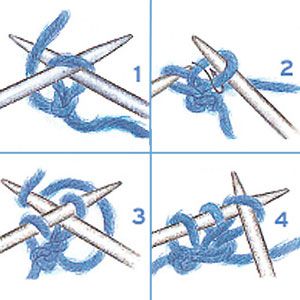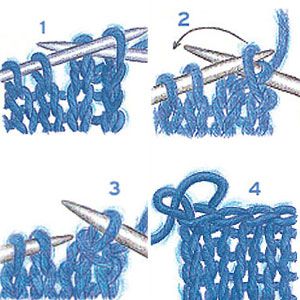Knitting For Beginners

Here’s our beginner’s guide to casting on, casting off, and knitting the basic stitches, so if you’ve always wanted to learn to knit, there’s no excuse not to have a go!
Top knitting tips
- Always knit a test square to check your tension. For example, the pattern may say your work should measure 10cm square over 22 sts and 30 rows. If your tension is tighter, you may need to try a larger needle, or a smaller one if your work is looser. Getting the correct stitch tension is more important than the row tension.
- New stitches are knitted onto the right needle, slipping old stitches off the left needle.
- When you finish a row, the left needle will be empty and the right needle full. Turn the right needle round to become the left needle and start knitting new stitches onto the empty right needle.
- When following a pattern, there will be a key to tell you what the abbreviations mean. For instance, ‘K1’ means knit one stitch, ‘sts’ means stitches.

1. Make a slip knot and place it on a needle – pull the yarn to tighten it on the needle, so making the first stitch. Hold this needle in your left hand. Put the right hand needle into the stitch and loop the yarn under and around it.
2. With the right-hand needle, pull the loop of yarn through the stitch and slip the loop onto the left-hand needle to form a second stitch.
3. Put the right-hand needle between the two stitches you’ve just made. Loop the yarn under and around the right-hand needle as before.
4. With the right-hand needle, pull the loop of yarn through the stitch and slip the loop onto the left-hand needle to form the third stitch. Continue until you have the required number of stitches.










